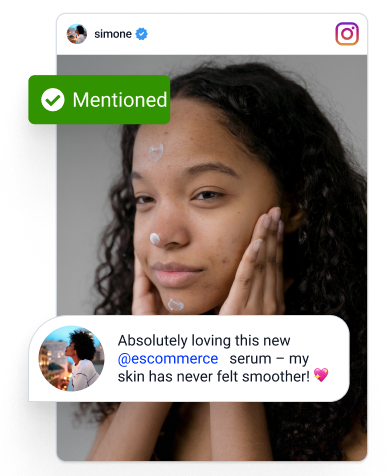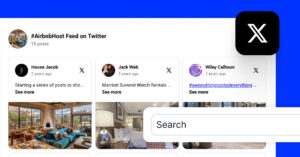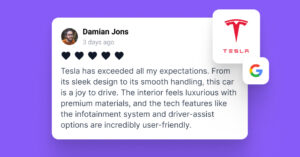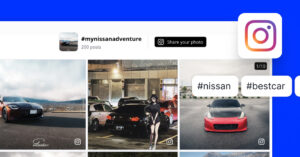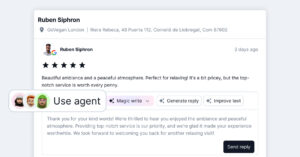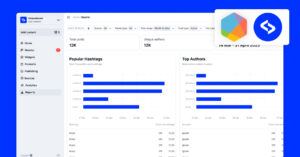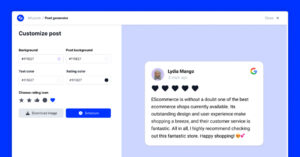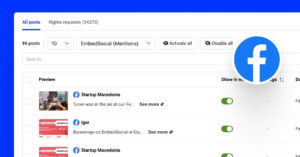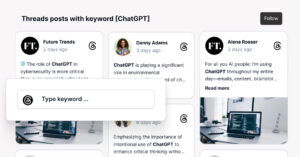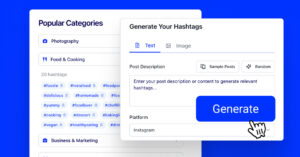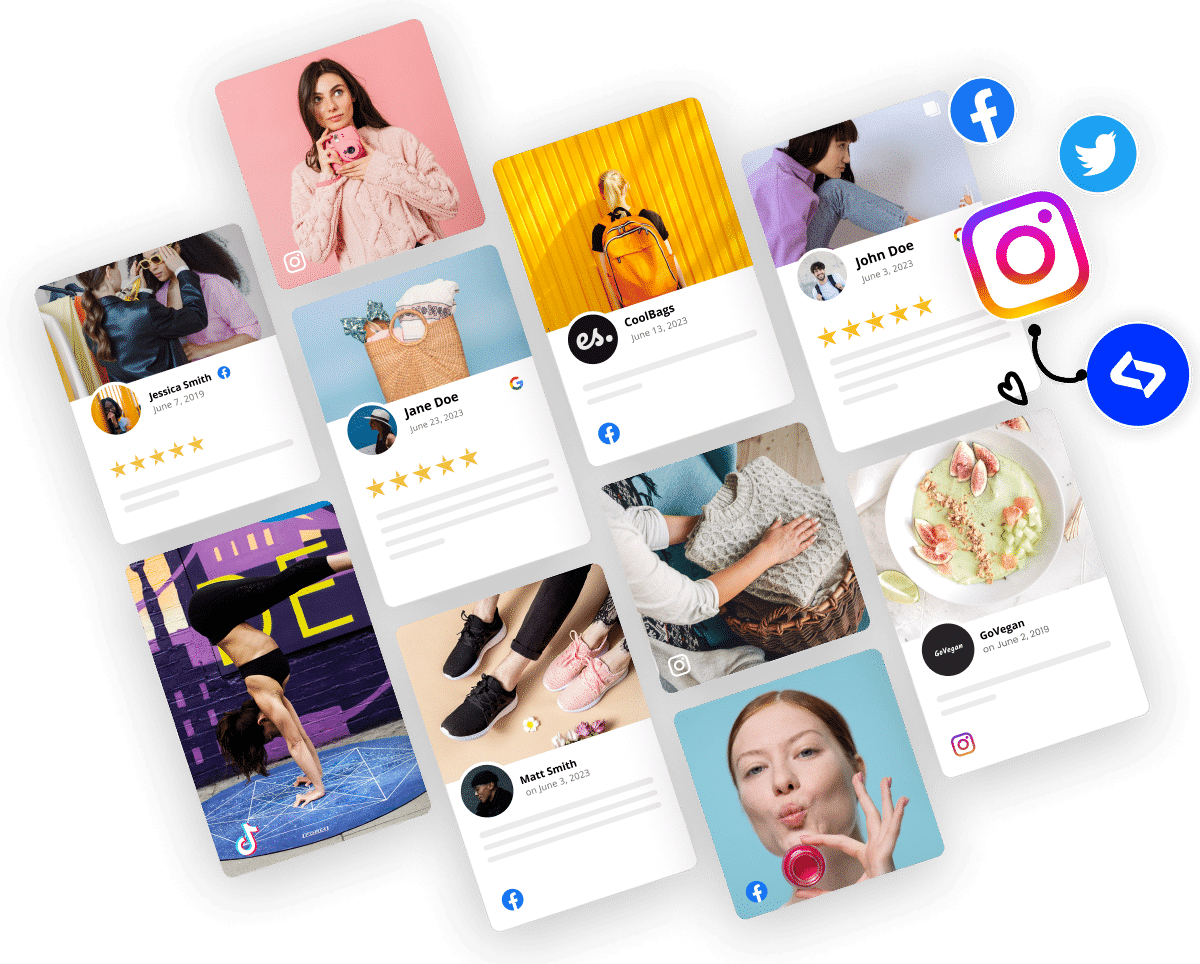Tracking and analyzing YouTube hashtags is very straightforward:
In addition to labeling your videos, YouTube hashtags help you discover trends, track conversations, and understand what content resonates with your audience.
At the end of the day, businesses that know how to monitor hashtags can tap into industry movements and build a solid social media reputation for their brands.
And that’s just scratching the surface.
By tracking YouTube hashtags, you analyze what’s working for your competitors, measure the impact of your campaigns, and uncover hidden opportunities.
Whether it’s spotting viral challenges, engaging with niche communities, or refining your video strategy, hashtags play a key role.
But how do you track them exactly?
Keep reading, as I show you how to monitor hashtags both manually and automatically—so you can make data-driven decisions without the guesswork.
What are YouTube hashtags?
YouTube hashtags are keywords or phrases preceded by the # symbol that help categorize and organize video content. They function as clickable links, allowing users to explore related videos using the same hashtag.
Hashtags on YouTube appear underneath the video title once you add them to the description. To make them immediately visible, you can also add them in the title. Plus, you can find them on hashtag results pages, and you get there by clicking on specific hashtags in the videos you watch. These pages show you how many videos every YouTube channel has under that tag.
For example, a travel vlogger posting a video about a trip to Bali might use #BaliTravel #TravelVlog #ExploreAsia to reach viewers interested in travel content. These hashtags help categorize the video, making it more discoverable to users searching for similar topics.
Once you start using relevant hashtags, you start improving your video’s visibility, attracting a targeted audience, and tracking industry trends more effectively.
As for brands planning to add hashtags, they have to be aware of the YouTube hashtag rules and try to avoid sexual or explicit hashtags to avoid getting banned.
Learn more:
How to Monitor Reddit for Brand Mentions, Keywords, and Customer Insights
Streamline your YouTube hashtag analytics via EmbedSocial
Since YouTube lacks robust social listening tools that allow you to track all the YouTube hashtags you want, choose a third-party social listening platform.
For example, EmbedSocial offers top-notch tools for social media listening, especially if are handling multiple locations or you want to scale your practices.
In addition to YouTube, EmbedSocial has a direct API connection to Meta, X, TikTok, and more, thus allowing you to track Threads keywords, Instagram mentions, etc.
The process of tracking YouTube hashtags via EmbedSocial is easy:
Step 1: Create your EmbedSocial account and log in
To be able to track any sort of social media content, you have to create a new EmbedSocial account. Starting your 7-day free trial only takes a few minutes.
Step 2: Add a new YouTube #Hashtags source
Next up, you have to add some YouTube hashtags you want to follow and analyze. To do that, go to ‘Sources’ (left ribbon menu) → ‘Add new source’ (top-right corner), and then find ‘YouTube’ → ‘#Hashtag’. You will only have to write your hashtag and tap next:
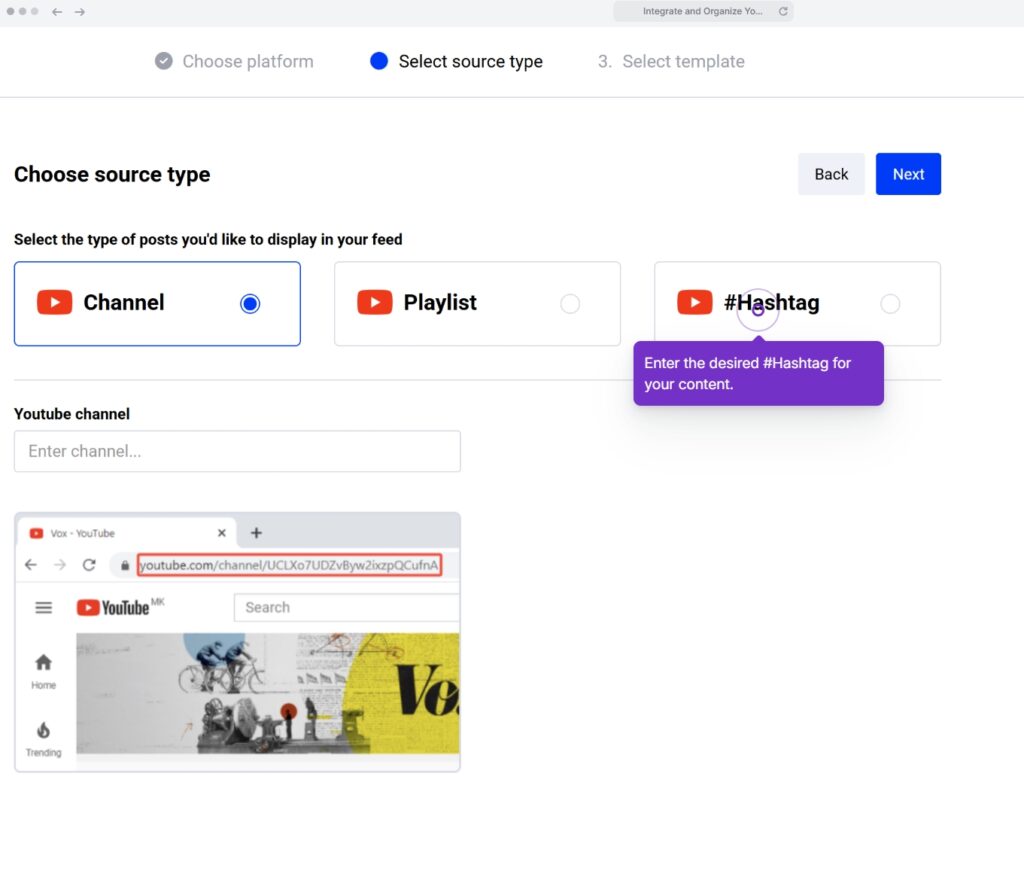
Step 3: Find all trending hashtags under ‘All Posts’
Next, go to ‘All Posts’ to find all YouTube videos tagged with that hashtag. If needed, use the dropdown menu to manually select posts with the correct hashtag:
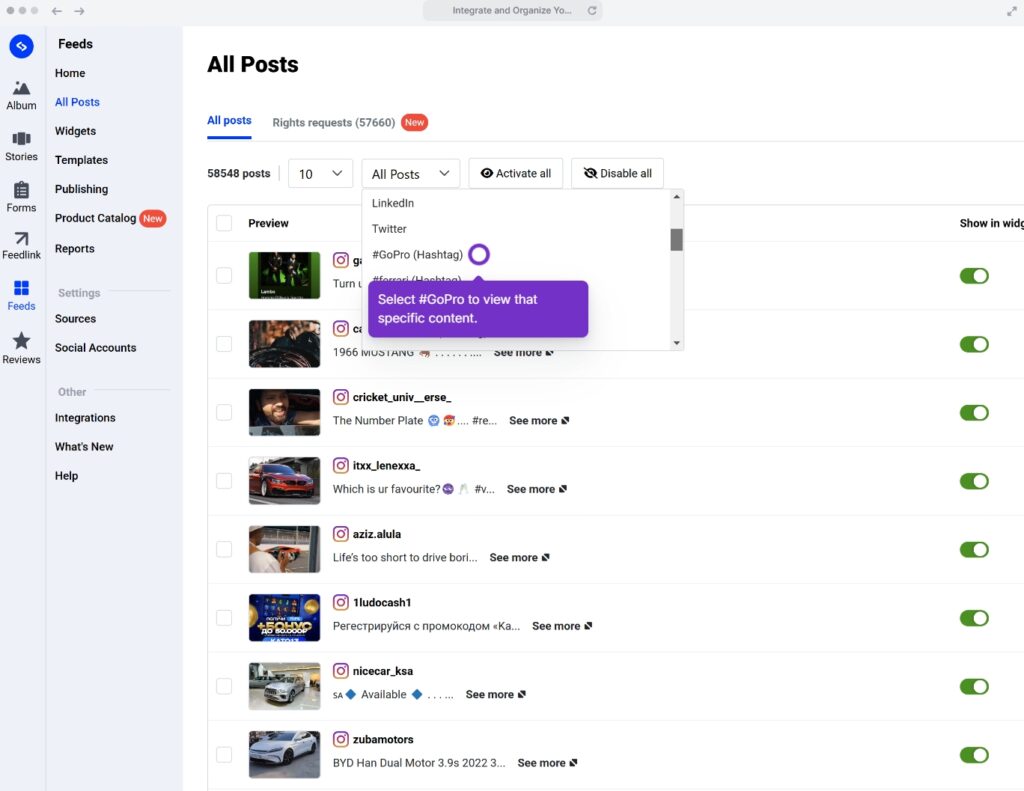
Step 4: Tag individual posts (if you need to)
Time to choose and tag individual videos depending on whether you want to check them out later or they are part of a hashtag contest you are analyzing:
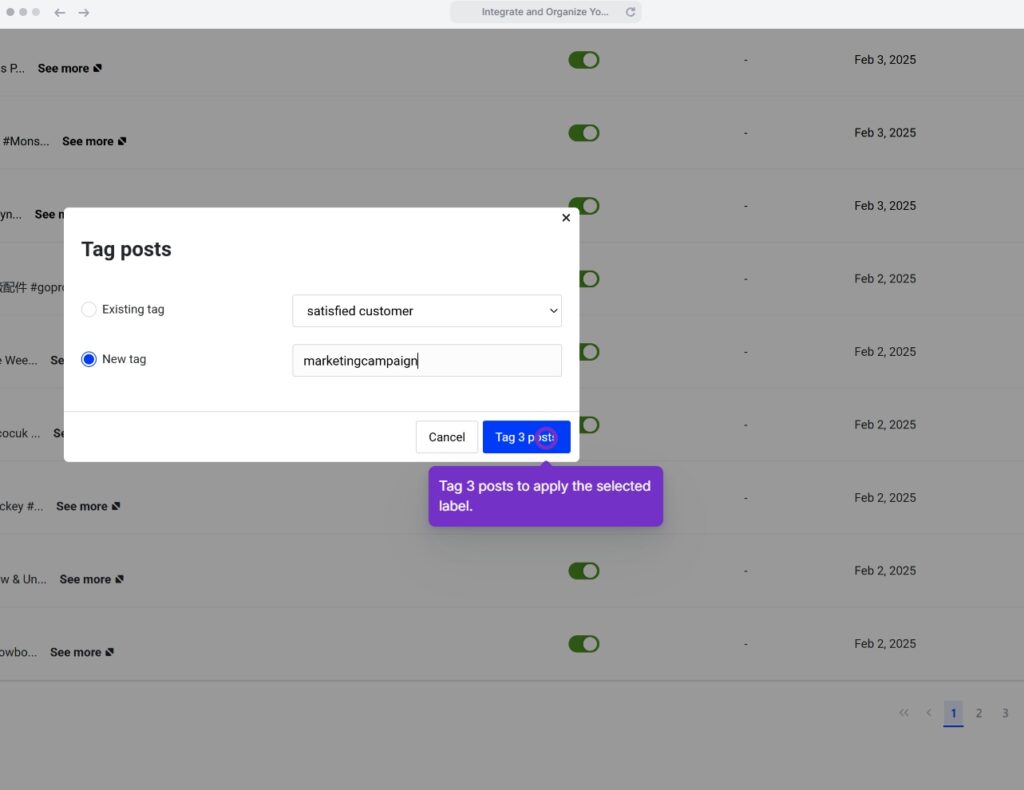
Step 5: Export all your posts for further analysis
To start analyzing your YouTube hashtag videos, go to ‘Reports’ from the left ribbon menu, choose your YouTube hashtag source and file type, then press ‘Download report’:
Step 6: Utilize a Free Brand Sentiment Analysis Tool
Once you get the data you collected from thousands of posts and user-generated content, the job is very easy. Just format the .csv file properly and plug it into our Free Brand Sentiment Analysis Tool:
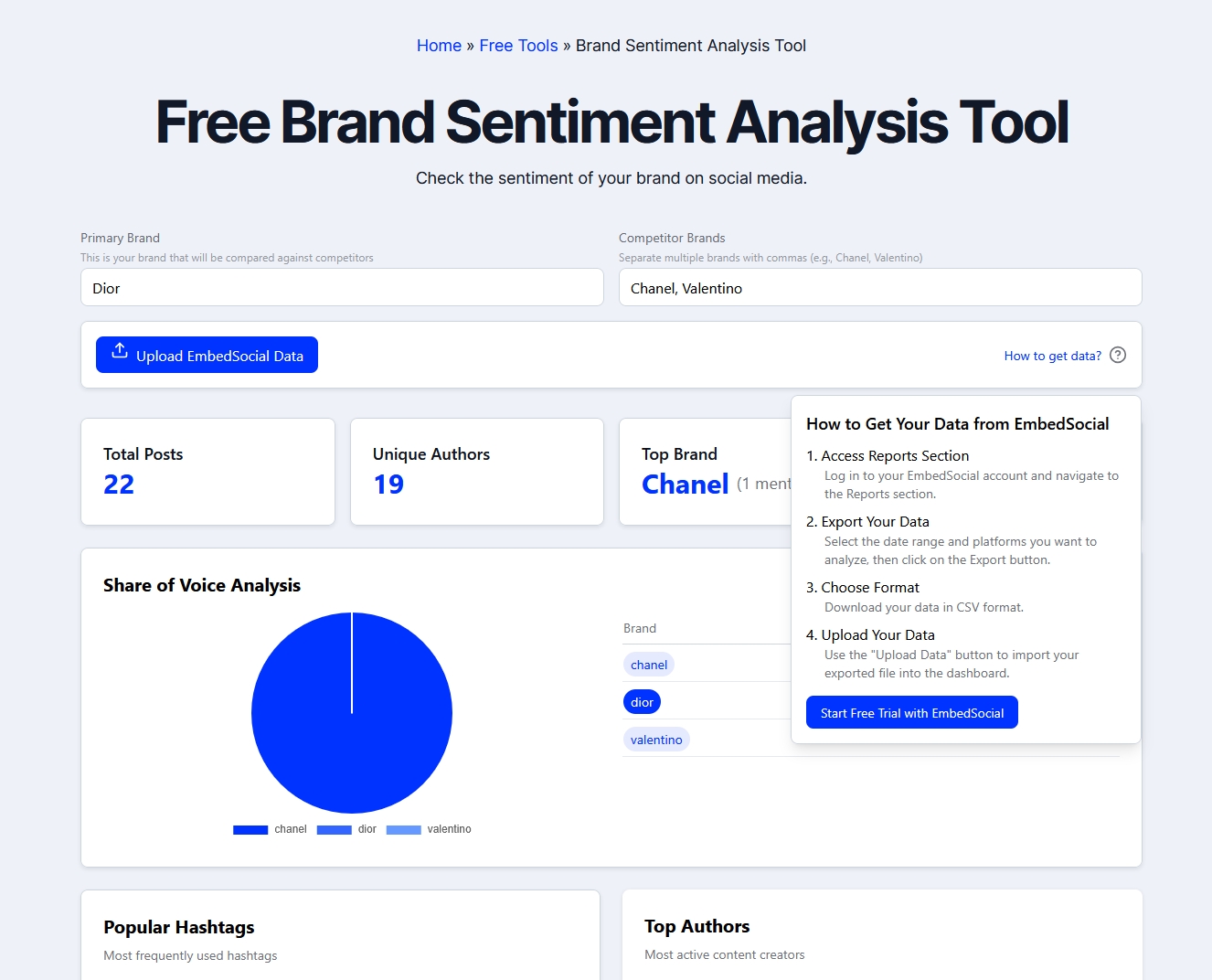
Alternatively, you can use EmbedSocial’s built-in ‘Trends’ tool (left-side ribbon in the platform) that does more or less the same job:
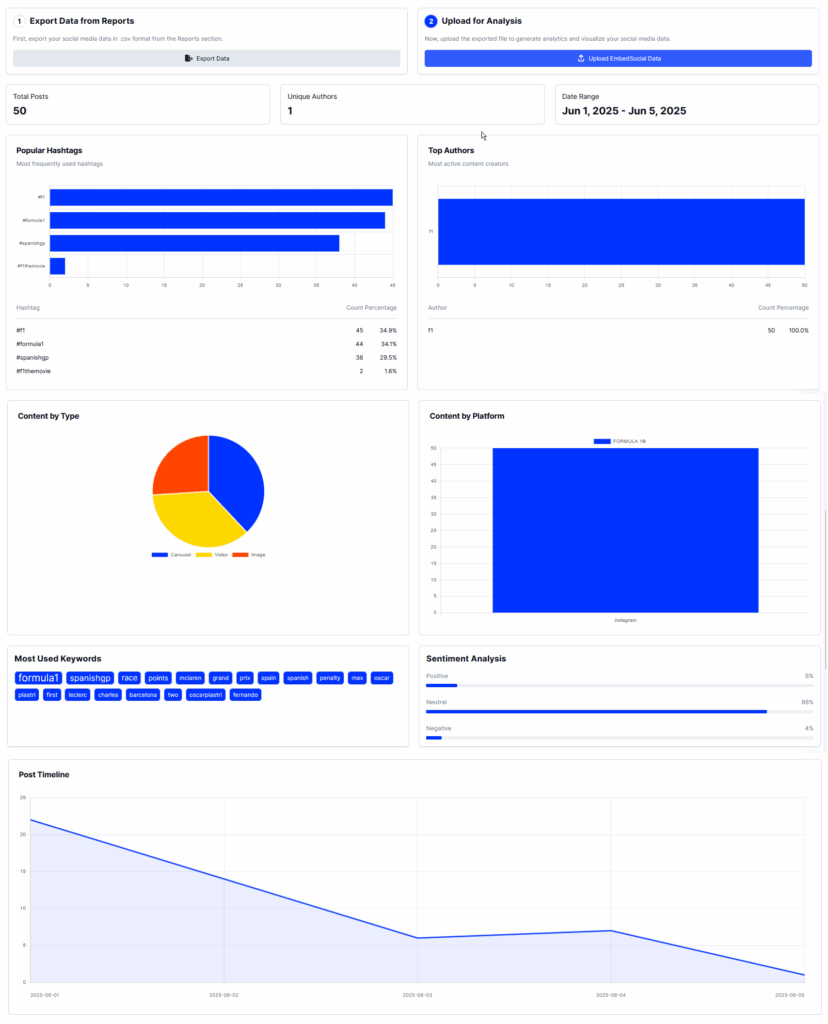
Bonus step: Embed your YouTube hashtags right away!
Last but not least, you should embed your YouTube hashtagged videos on your website via EmbedSocial. You just need to create your YouTube website widget, copy the code, and then paste it into your website builder via an HTML box:
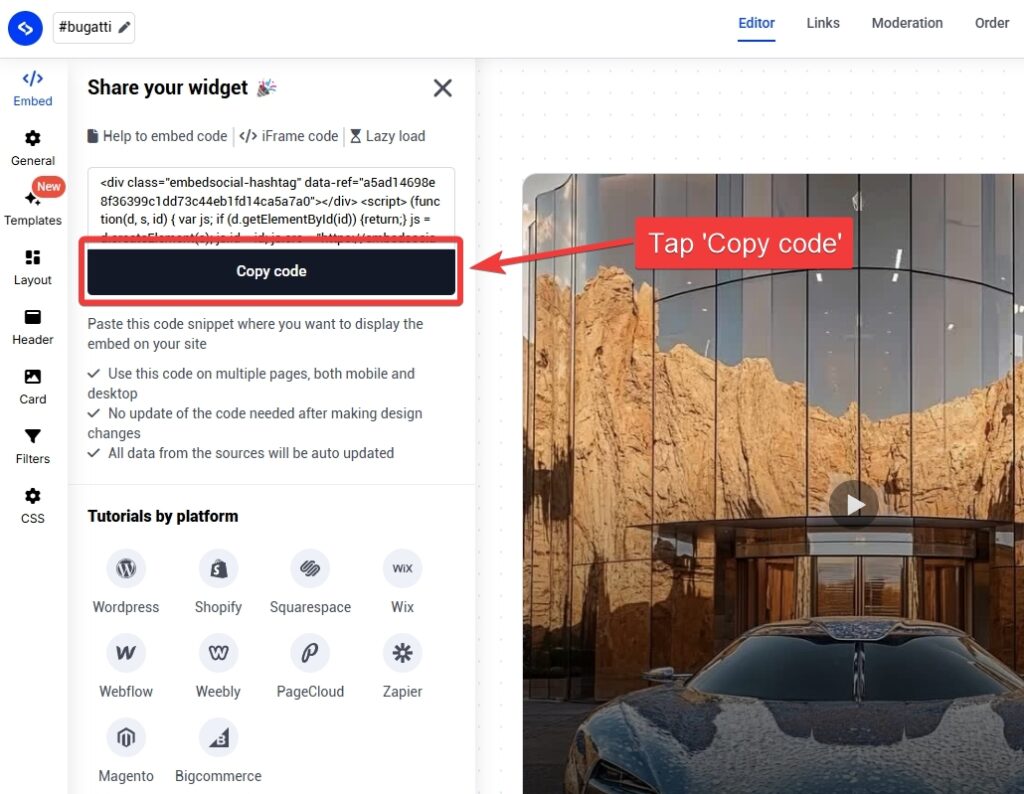
Learn more:
How to Embed Social Media Mentions on any Website
How to Embed Instagram Mentions for E-Commerce Brands in 2025
Methods to manually monitor YouTube hashtags
If you’re not using an automated tool, you can still track YouTube hashtags manually. While this approach takes more effort, it allows you to stay informed about industry trends, competitor strategies, and audience preferences. Here are a few effective ways to manually monitor hashtags on YouTube:
1. Use YouTube’s search bar
The simplest way to track hashtags is by typing them directly into YouTube’s search bar with the # symbol (e.g., #DigitalMarketing) to pull up a dedicated results page showing all the videos using that hashtag, helping you analyze content trends and popular topics:
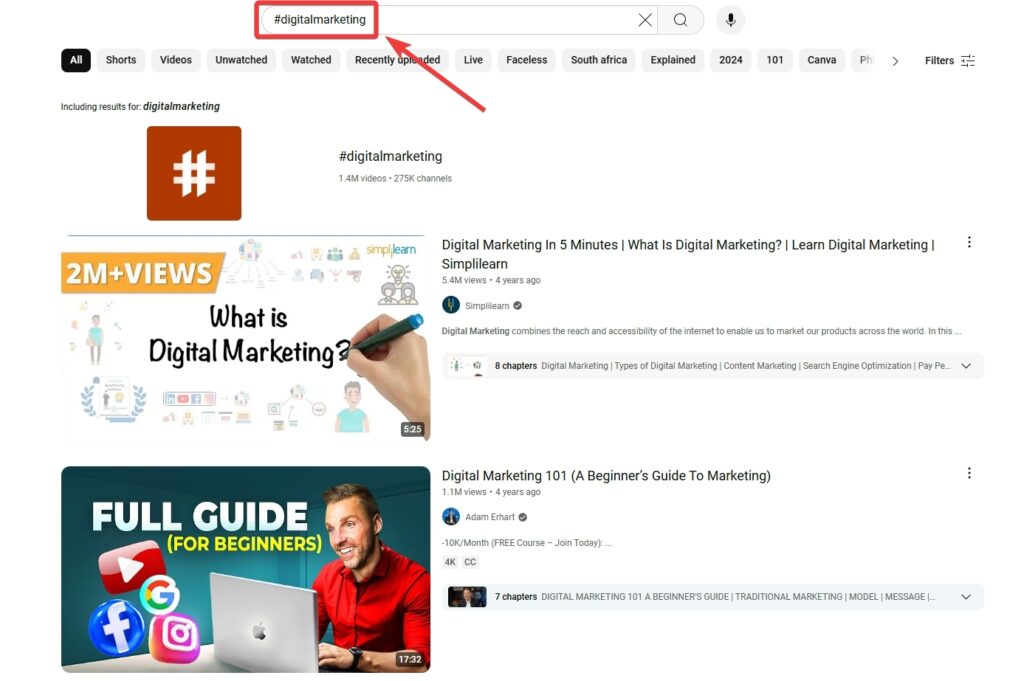
Pro Tip: Try searching for both broad and niche hashtags to see how content varies between general trends and specialized topics.
2. Click on hashtags in video titles and descriptions
YouTube makes hashtags clickable in video titles and descriptions. Clicking on a hashtag will lead you to the same results page mentioned above. This is an easy way to explore content under a specific tag and discover what’s gaining traction in your industry:
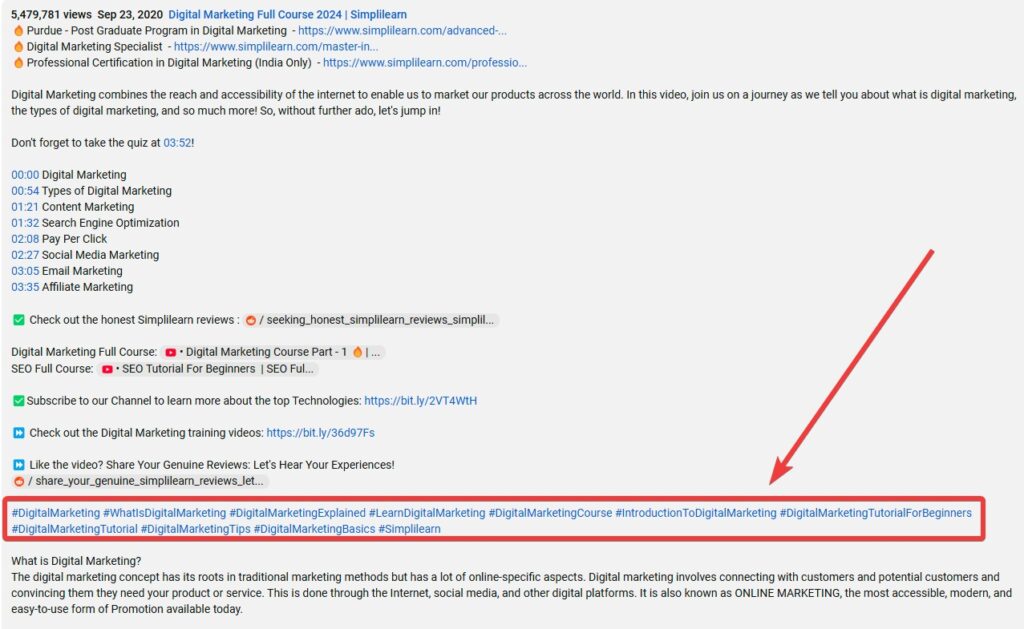
Pro Tip: If you find a hashtag frequently appearing in top-ranking videos, consider testing it in your own content to see if it boosts visibility.
3. Monitor hashtag trends on YouTube Shorts
Hashtags play a big role in YouTube Shorts, which means tracking them can help you identify viral content. Browse through Shorts with trending hashtags to see what types of videos are getting the most engagement:
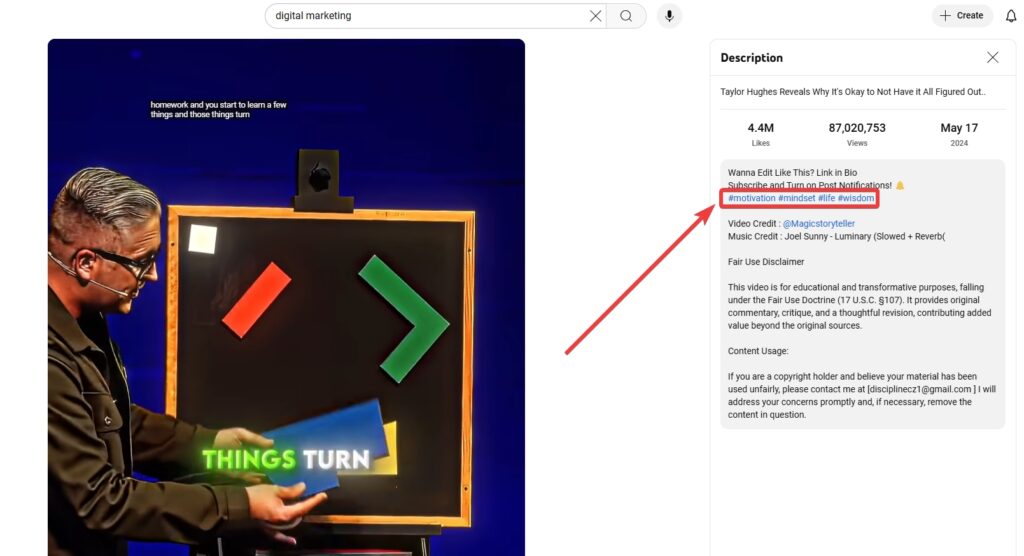
Pro Tip: If you spot a rapidly growing hashtag in Shorts, consider creating a short-form video using it to ride the trend early before it becomes oversaturated.
4. Organize hashtag data in a spreadsheet
For ongoing tracking, create a spreadsheet where you record commonly used hashtags, their popularity, and engagement levels. You can update this weekly or monthly by checking YouTube’s search results and competitor videos.
Pro Tip: Use conditional formatting in your spreadsheet to highlight hashtags that are increasing in usage over time, making it easier to track trends at a glance.
5. Track competitor hashtag usage
If you want to understand what’s working for competitors, take note of the hashtags they consistently use in their video titles and descriptions. Compare them across multiple videos and check which ones appear frequently.
This can help you refine your own hashtag strategy. Also, you can try using any free YouTube hashtag generator to get some new ideas.
Pro Tip: Look at the oldest videos from successful channels and track how their hashtag usage has evolved. This can reveal which hashtags helped them grow over time.
As you can see, while manual YouTube hashtag tracking is possible, it still requires consistency. So, if you want to get valuable insights on a regular basis, consider combining these methods with the automated EmbedSocial social media monitoring tools.
5 bеst practices for tracking hashtags on YouTube videos
If you are looking to maximize the efficiency of your YouTube hashtag tracking, consider the following five best practices, along with a few examples of doing it right:
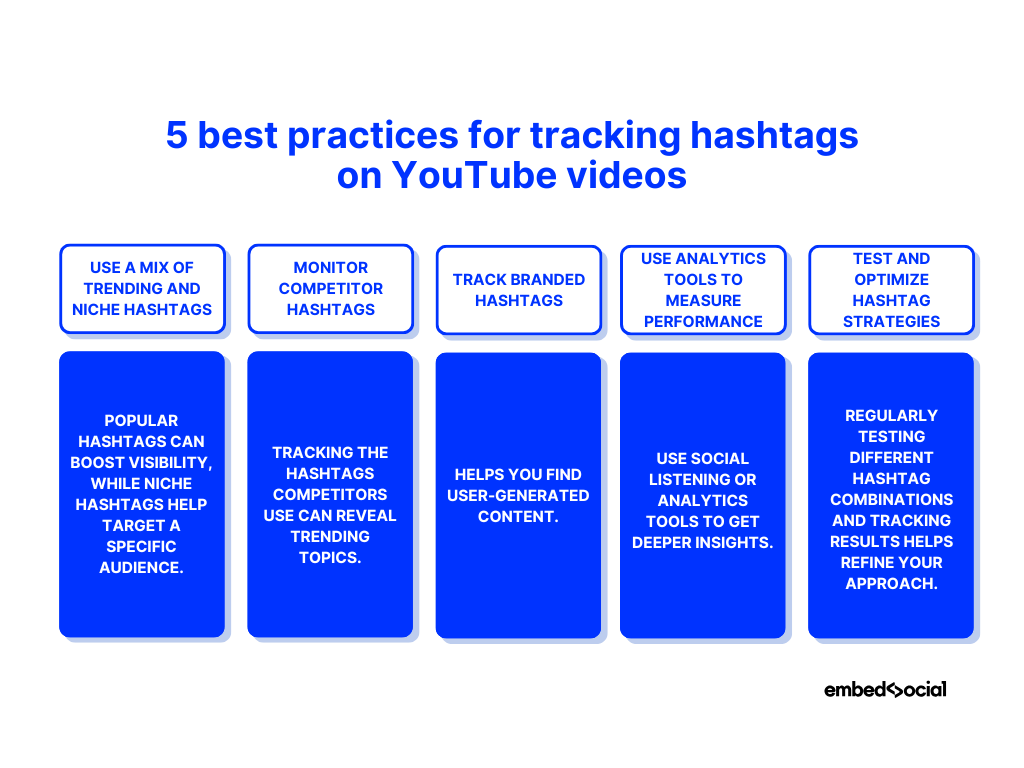
Use a mix of trending and niche hashtags
Popular hashtags can boost visibility, while niche hashtags help target a specific audience. A balanced approach ensures your videos reach both broad and highly engaged viewers.
📌 Example: A fitness brand using #Workout and #HIITTraining ensures it reaches general fitness enthusiasts while attracting a dedicated audience interested in high-intensity interval training.
Monitor competitor hashtags to refine your strategy
Tracking the hashtags competitors use can reveal trending topics, successful content types, and gaps in your strategy. By analyzing their hashtag choices, you can adjust your approach to stay competitive. After all, you need to get hashtag suggestions and focus on popular YouTube hashtags.
📌 Example: A travel agency noticed competitors gaining traction with #BudgetTravel and #SoloBackpacking. By incorporating these hashtags into their video content, they attracted budget-conscious travelers.
Track branded hashtags to engage with your audience
Encourage customers to use a branded hashtag in their videos and track it regularly. This helps you find user-generated content, interact with your community, and build brand credibility.
📌 Example: GoPro’s #GoProHero campaign encouraged users to share adventure videos shot with their cameras. By tracking this hashtag, GoPro discovered high-quality UGC, which they later featured in their own marketing.
Use analytics tools to measure hashtag performance
Manually tracking hashtags can be time-consuming, so use social listening or analytics tools like EmbedSocial to get deeper insights into how hashtags are performing. Look for engagement metrics, impressions, and audience sentiment.
📌 Example: A beauty brand used a hashtag analytics tool to track #VeganSkincare, discovering it had a high engagement rate. They then doubled down on similar content, increasing their video views.
Test and optimize hashtag strategies over time
Not all hashtags perform the same way, so regularly testing different hashtag combinations and tracking results helps refine your approach. Rotate hashtags based on trends and engagement levels.
📌 Example: A tech YouTuber started using #AIInnovation but found that #AITrends performed better in engagement. By analyzing the difference, they optimized their future video hashtags for better reach.
Why track YouTube video hashtags?
Collecting UGC is not the only reason why you should be tracking YouTube video hashtags. After all, this strategy will help you discover trends, maximize engagement, and ultimately boost your business’s competitiveness. Here’s why YouTube social listening matters:
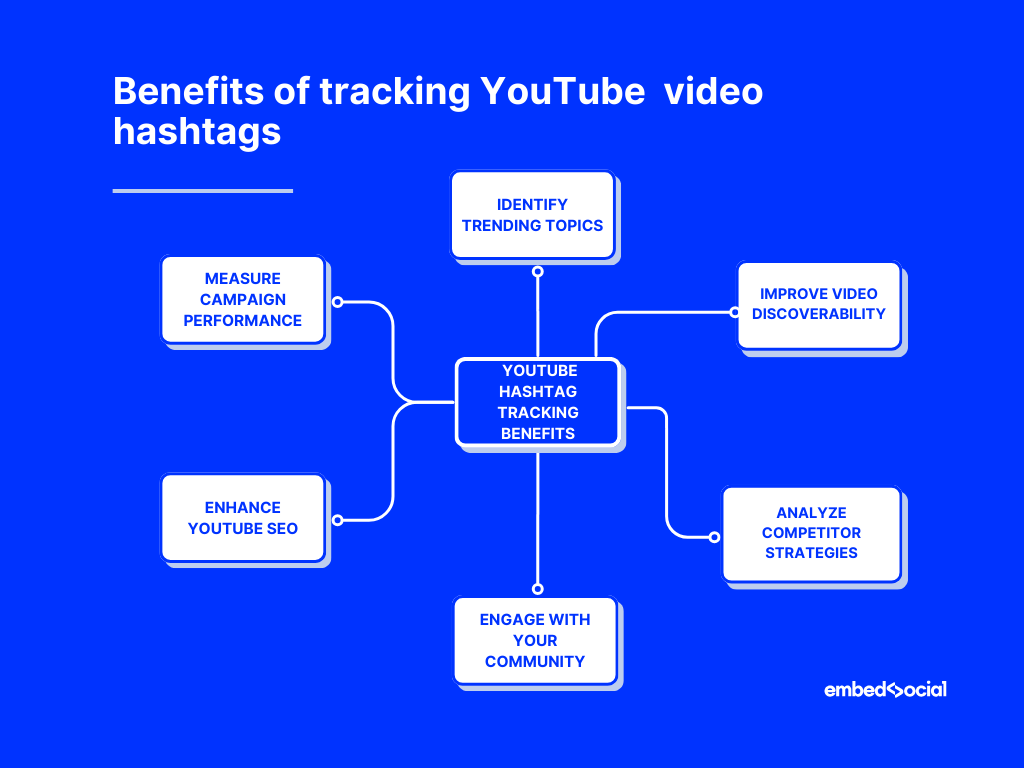
- Identify trending topics—тracking hashtags allows brands to spot emerging trends and create timely content that resonates with their audience;
- Improve video discoverability—YouTube hashtags help categorize videos, making them more likely to appear in searches and recommended content;
- Analyze competitor strategies—monitoring industry-related hashtags reveals what’s working for competitors and helps refine your own approach;
- Engage with your community—tracking branded hashtags helps businesses find and interact with user-generated content, fostering stronger customer relationships;
- Enhance YouTube SEO—strategic use of hashtags can improve your video UGC SEO, by making the videos more relevant to specific searches;
- Measure campaign performance—hashtag tracking helps businesses evaluate the reach and impact of their YouTube marketing campaigns.
As you can see, by leveraging YouTube hashtag tracking, you can make data-driven decisions that boost visibility, engagement, and overall success on the platform.
Conclusion: YouTube hashtag tracking unlocks growth opportunities!
Want to stay ahead of your competition when it comes to UGC video and YouTube marketing? You have to start tracking YouTube hashtags right away! That way, you can stay in the loop of all the latest industry trends, boost your discoverability, and refine your strategy.
Also, by monitoring the right hashtags, you will get ahead of emerging conversations, analyze competitor tactics, and maximize your content’s reach.
Whether you’re using hashtags to identify trending topics, engage with your community, or measure campaign success, tracking them gives you valuable insights.
Then, with the right mix of manual tracking and automation tools (EmbedSocial), you will start harnessing the full potential of YouTube hashtags to drive growth.
So, what are you waiting for? Now’s the time to start tracking and analyzing YouTube hashtags—because staying ahead on social media platforms means a lot!
FAQs about tracking YouTube hashtags
Can you see hashtags on YouTube?
Yes, YouTube hashtags are mainly visible in the video description as clickable links. Clicking a hashtag takes you to a dedicated results page showing all videos using the same tag.
Do hashtags work on YouTube?
Yes, hashtags help categorize videos, making them easier to discover in searches and trending topics. While they don’t directly boost rankings, they improve visibility and help users find related content.
How to check YouTube hashtags?
You can check hashtags by clicking on any hashtag in a video title or description, using YouTube’s search bar with a “#” symbol, or exploring hashtag-based search results pages.
Is there a way to track hashtags?
Yes, you can track YouTube hashtags manually by searching them on YouTube or using third-party tools that offer hashtag monitoring and YouTube analytics for deeper insights like EmbedSocial.
Can YouTube track hashtag performance?
YouTube itself doesn’t provide detailed analytics for hashtags, but social listening tools and third-party platforms can track performance, engagement, and trends associated with specific hashtags.
